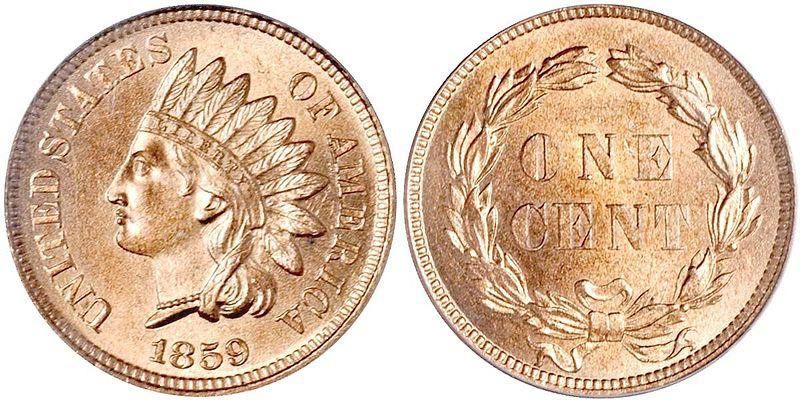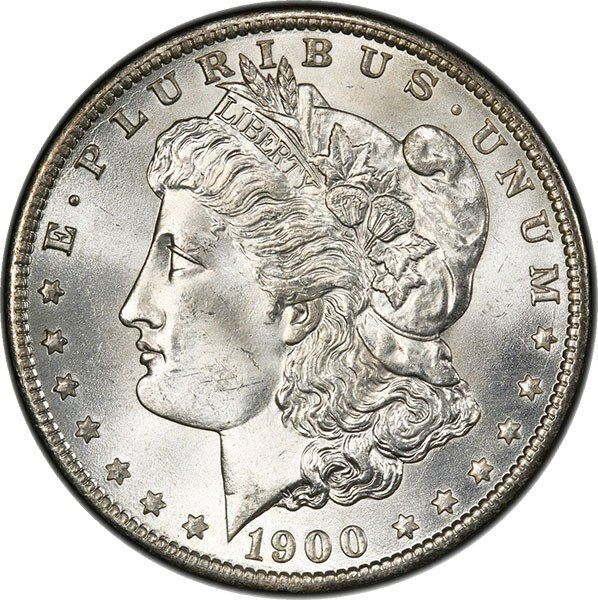
Unveiling the Allure of Morgan Dollars: A Classic American Treasure
In the vast realm of numismatics, few coins possess the same legendary status as Morgan dollars. These silver beauties, minted from 1878 to 1904 and once again in 1921, are the epitome of American coinage. With their majestic designs and historical significance, Morgan dollars captivate collectors and investors alike. Let's delve into the allure of these iconic coins and explore why they continue to hold a special place in the hearts of enthusiasts.
Historical Background:
Morgan dollars owe their name to their creator, George T. Morgan, an English-born engraver who served as the Assistant Engraver at the United States Mint. Commissioned by the Bland-Allison Act of 1878, Morgan was tasked with designing a new silver dollar that would replace the less popular Trade dollar. The result was a coin that would become a timeless symbol of American heritage.
Design and Aesthetic Appeal:
One of the key factors contributing to the enduring popularity of Morgan dollars is their striking design. The obverse features Lady Liberty, portrayed as a youthful figure with a coronet inscribed with the word "LIBERTY." Surrounding her are thirteen stars, representing the original colonies. On the reverse, an eagle with outstretched wings is depicted, clutching arrows and an olive branch. Intricate details and a sense of majestic elegance make the Morgan dollar a visual masterpiece.
Silver Content and Value:
Morgan dollars contain 90% silver and 10% copper, contributing to their intrinsic value beyond their numismatic appeal. As such, these coins are highly sought after by investors looking to diversify their portfolios with tangible assets. The silver content alone ensures that Morgan dollars retain a minimum value, making them a sound investment choice.
Historical Significance:
Beyond their aesthetics and precious metal content, Morgan dollars hold a significant place in American history. They were minted during a period of vast economic growth and played a crucial role in the nation's transition from a primarily agrarian economy to an industrial powerhouse. Owning a Morgan dollar allows collectors to hold a tangible piece of the past, connecting them to a transformative era in American history.
Collecting and Rarity:
Morgan dollars are a popular choice among coin collectors due to their availability in a range of dates and mint marks. Some issues are more scarce than others, increasing their desirability and potential value. Collectors often embark on the exciting quest of assembling a complete set of Morgan dollars, chasing elusive key dates and rare varieties.
Morgan dollars are not merely coins; they are a tangible link to America's past, encapsulating the nation's growth, history, and artistic excellence. Their allure stems from a combination of captivating design, intrinsic value, and historical significance. Whether you're an avid collector or an investor seeking a tangible piece of American heritage, Morgan dollars stand as a testament to the enduring legacy of American coinage.
In 1969, Singapore introduced its own currency and as part of that, released a new coin. This coin was minted to commemorate the founding of the Singapore dollar. It signifies Singapore's independence and attainment of self-governance. Featuring the Singaporean coat of arms and carrying symbolic significance, the coin represents a significant milestone in the country's history.

The 1913-S 25-cent (quarter dollar) U.S. silver quarter, minted at the San Francisco Mint (recognized by the "S" mint mark), is a highly sought-after coin among American coin collectors. These coins were produced in 1913 and did not circulate widely during their time, making them quite rare and thus more valuable.
The term "Brilliant Uncirculated" (BU) refers to the coin's condition, meaning it has retained its brilliance and appearance due to not being circulated, showing minimal to no signs of wear.
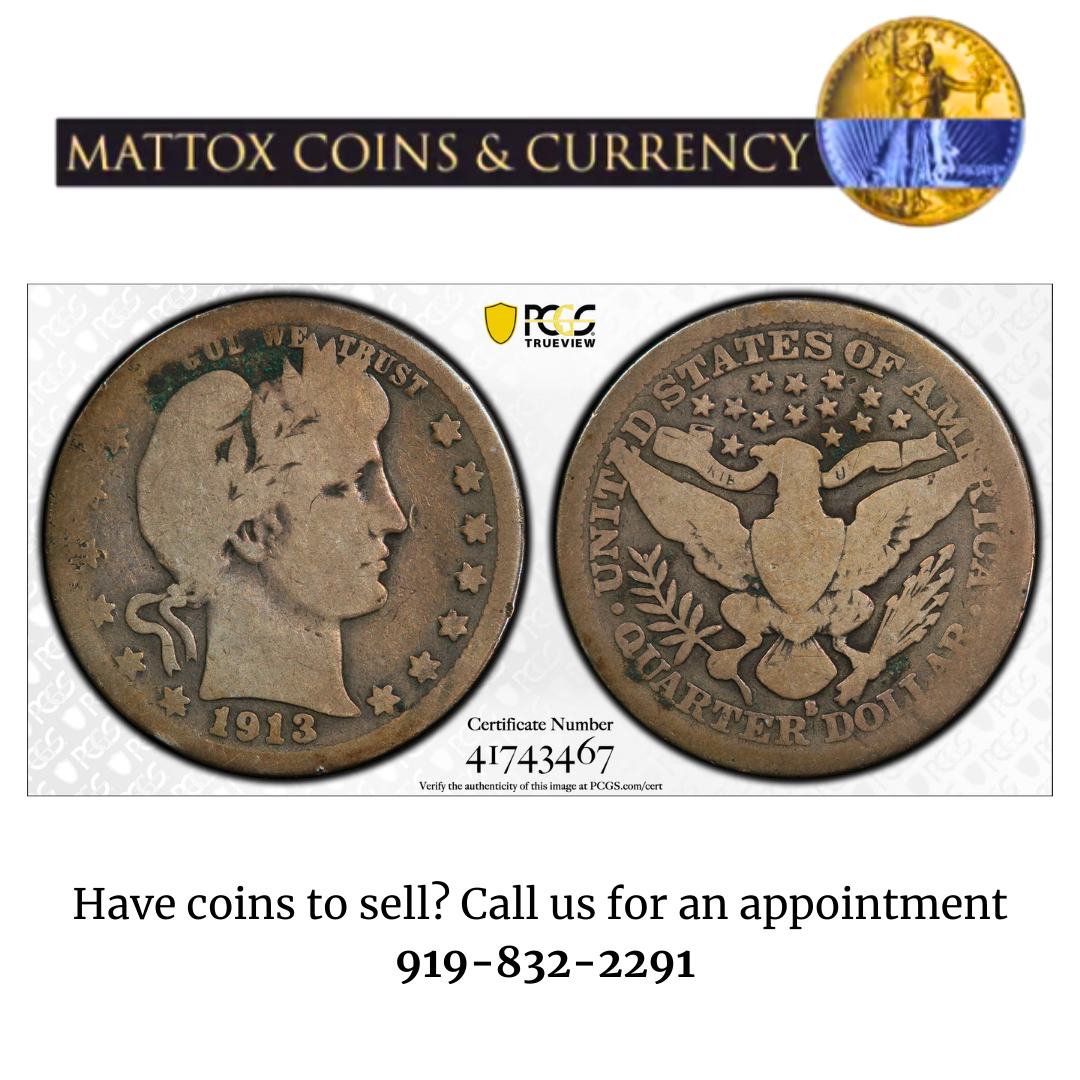
A 1932-D 25 cent quarter dollar is a currency minted by the United States. The "D" mint mark indicates it was minted by the Denver Mint. These coins were minted during the Great Depression era, a period marked by economic hardships and unemployment. 1932-D 25 cent quarter dollars are popular among collectors due to their dates and rarity. These coins are typically found in "BU" (Brilliant Uncirculated) condition, meaning they are in shiny condition as they have not entered circulation and have been preserved.
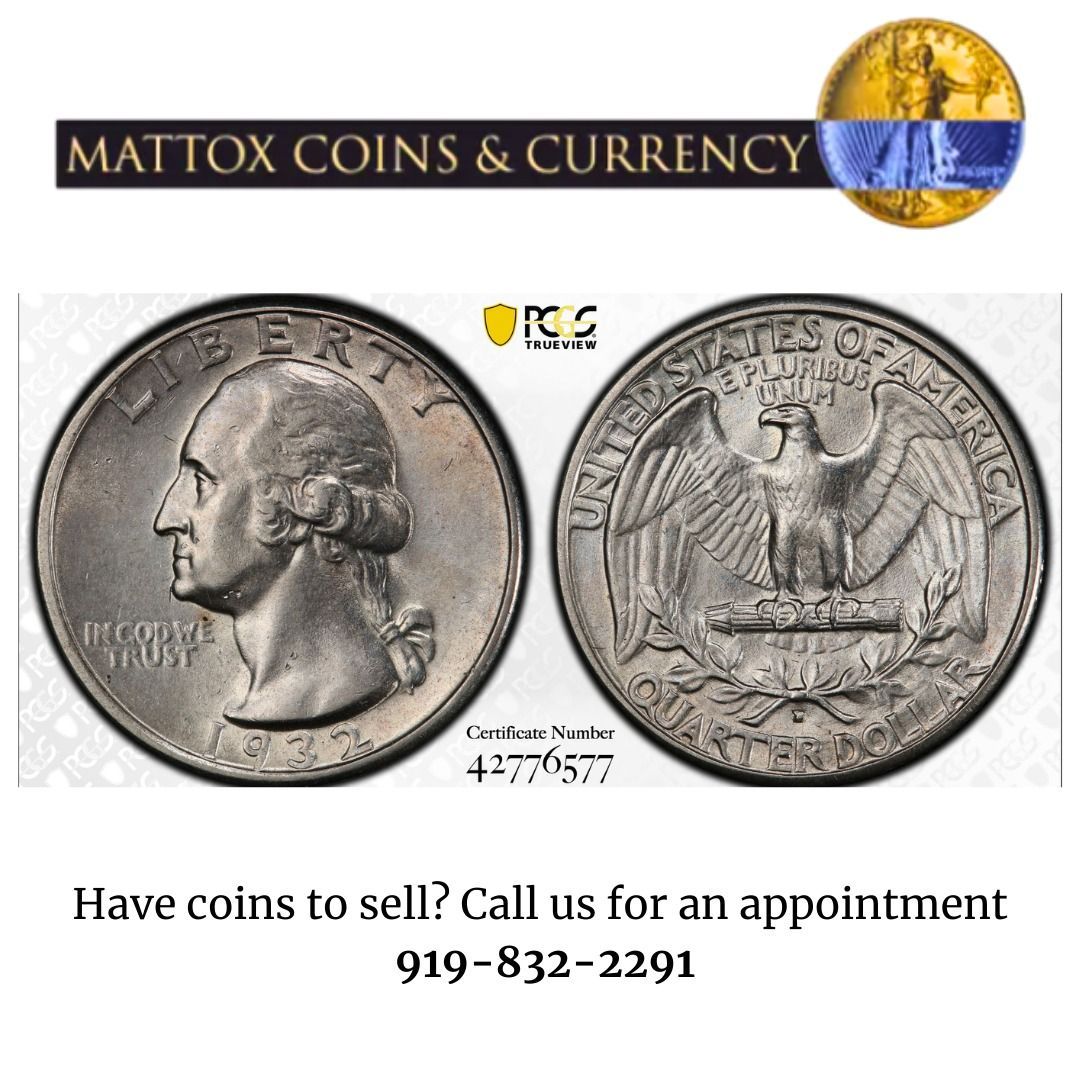
The 2014 200 Yuan Panda Gold is a series of gold coins issued by the People's Republic of China. These coins are typically designed with a panda motif, as pandas are one of China's national symbols. The 2014 edition of the gold panda coin with a denomination of 200 Yuan is a sought-after product by gold collectors and investors for investment purposes.
The coin is usually minted in a specific weight and purity of gold (for example, 1/2 ounce, 1 ounce, etc.) and is often considered a collector's item due to its limited mintage, thus carrying investment value. Chinese gold pandas are popular among collectors because they feature a different design of pandas each year. Therefore, the 2014 200 Yuan Panda Gold coin can be a valuable addition to a collection and is highly coveted by collectors and investors alike.
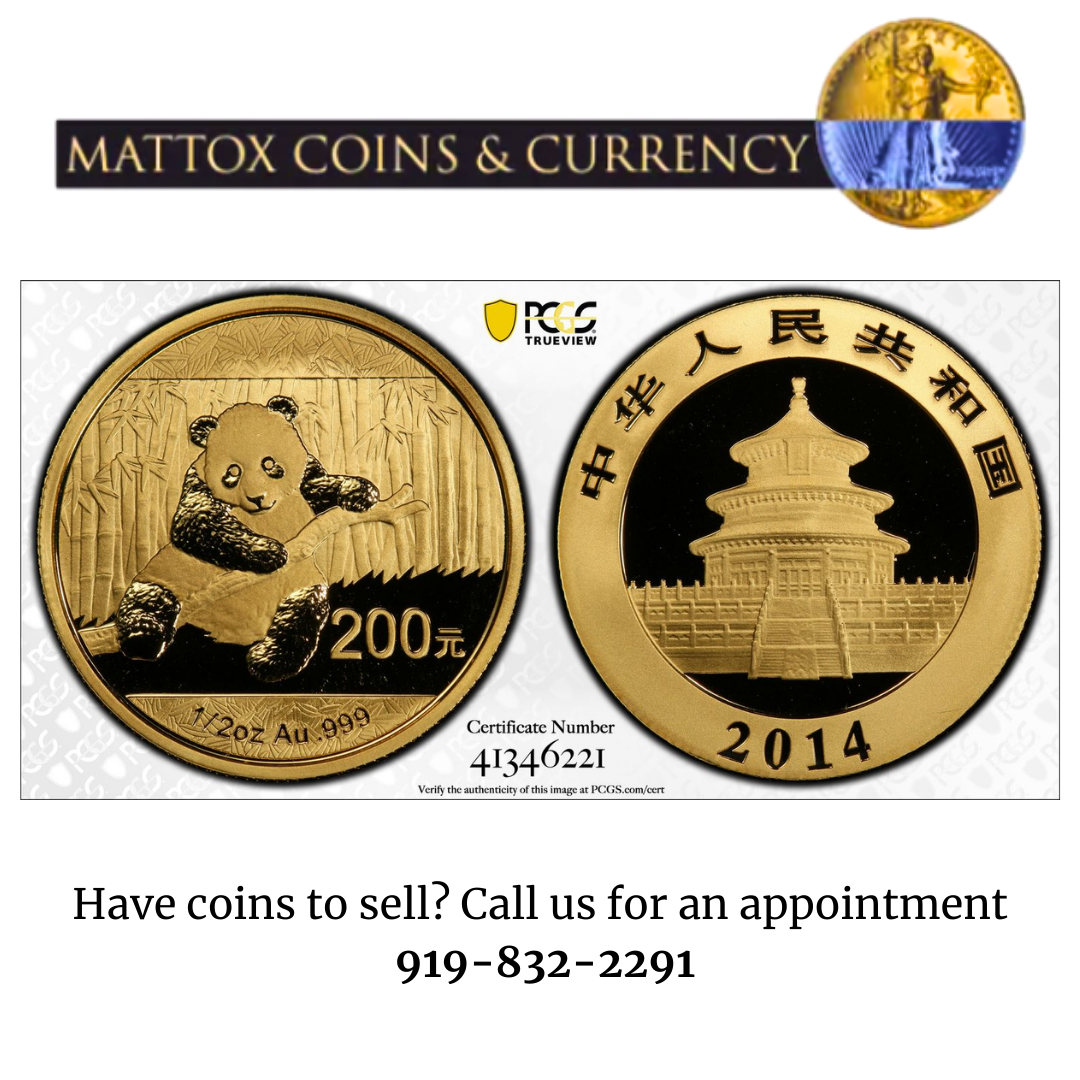
The 1-cent coin minted in 1877 corresponds to an important period in the history of the United States. During this time, various changes and developments took place in the U.S. economy and society. 1877 marked the end of the Reconstruction Era in the United States, following the completion of post-Civil War recovery. Industrial developments gained momentum nationwide, and the economy began to grow. Additionally, this period saw the establishment of new states in the West and continued westward expansion by settlers. The coin being dated 1877 may reflect the characteristic features of this period and a specific era in American society.
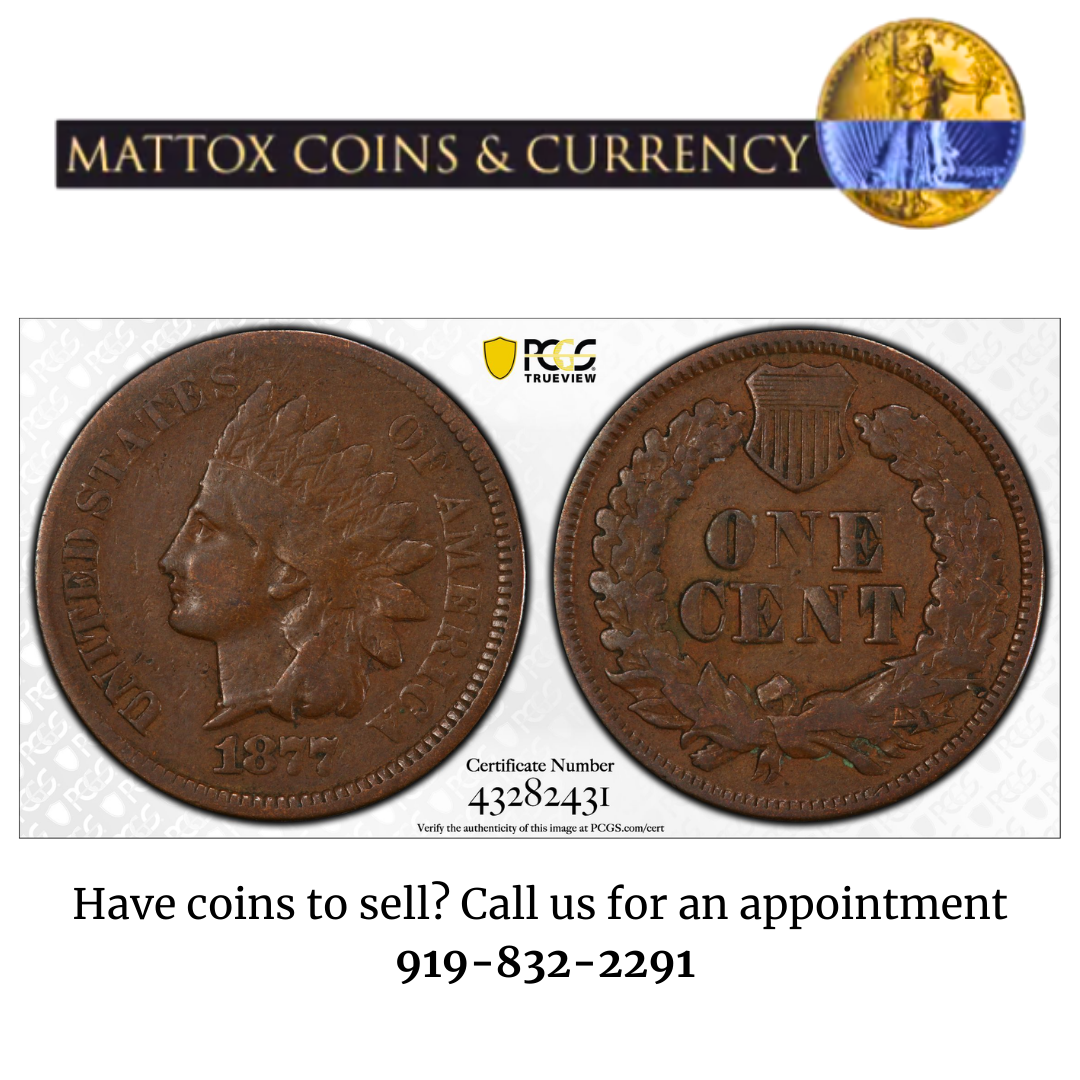
The 1875-S 20 Cent is a minted coin in the history of the United States. The "S" mark indicates that it was minted at the San Francisco Mint. This coin, produced in 1875, is made from an alloy comprising 90% silver and 10% copper. During this period, 20 Cent coins were generally not extensively circulated. The term "BU" (Brilliant Uncirculated) signifies that the coin did not enter circulation and is preserved in an excellent condition. Such coins are typically stored carefully to prevent oxidation, especially arising from copper content.
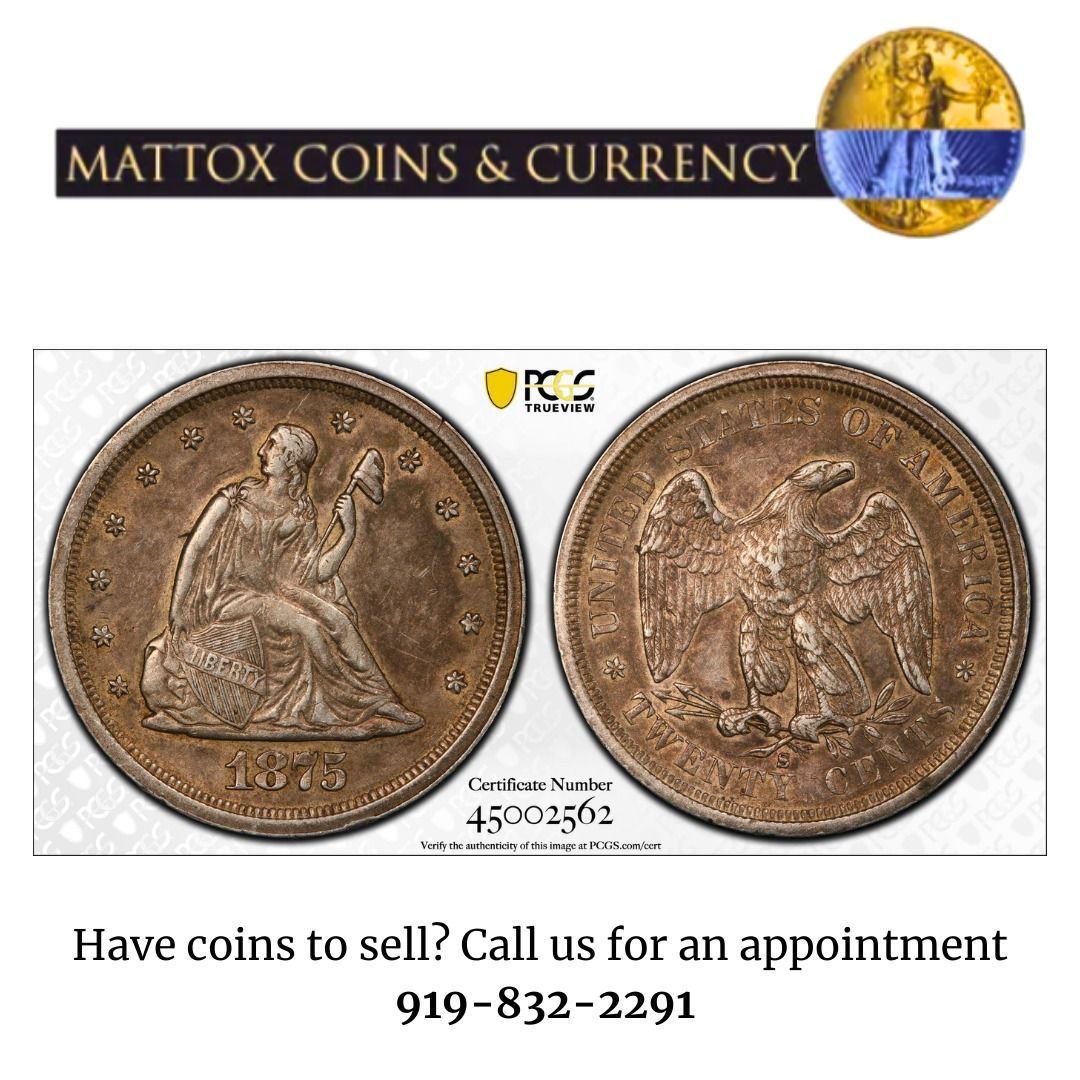
1853 G50C BG-428 refers to a standard reference number for a Gold 50 cents coin. This signifies a type of coin minted in the United States in 1853 with a half-dollar value and made of gold. "BG-428" denotes its classification in the Breen-Gillio reference catalog (California Pioneer Fractional Gold Coins). These coins were privately minted by jewelers during and after the California Gold Rush, circulating in various denominations. They typically contain very little gold and are therefore valued more for their collectible appeal.
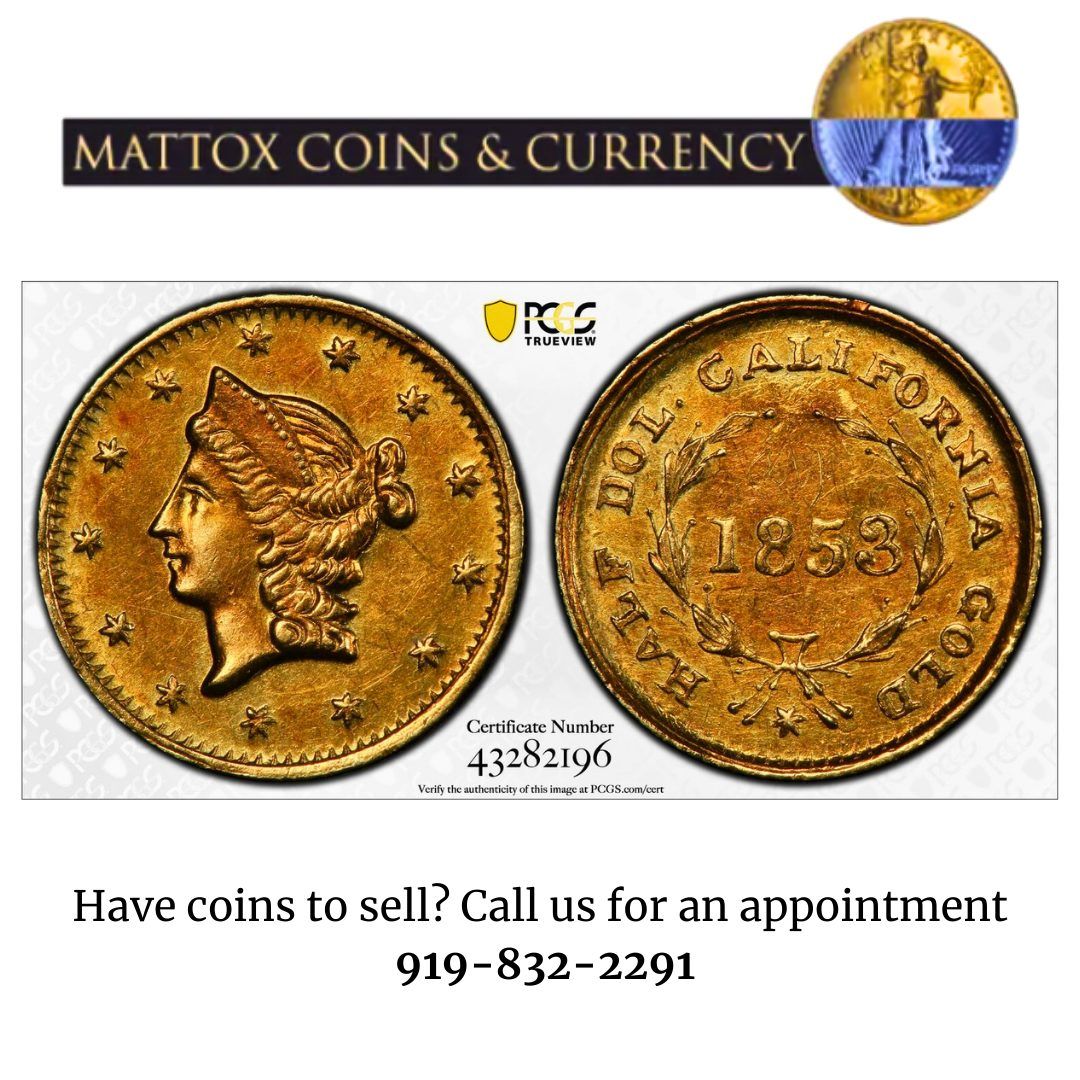
The 1858-O 10C is a quarter dollar silver coin minted at the New Orleans branch of the United States Mint (indicated by the "O" mint mark). It is one of the denominations known as "Seated Liberty" coins (similar to the Morgan Dollar).
The term "BU" or "Brilliant Uncirculated" refers to a coin that has never entered circulation and is still bright as it was originally struck. This is a condition particularly prized by collectors because coins that retain their original condition are rarer and can command higher values.
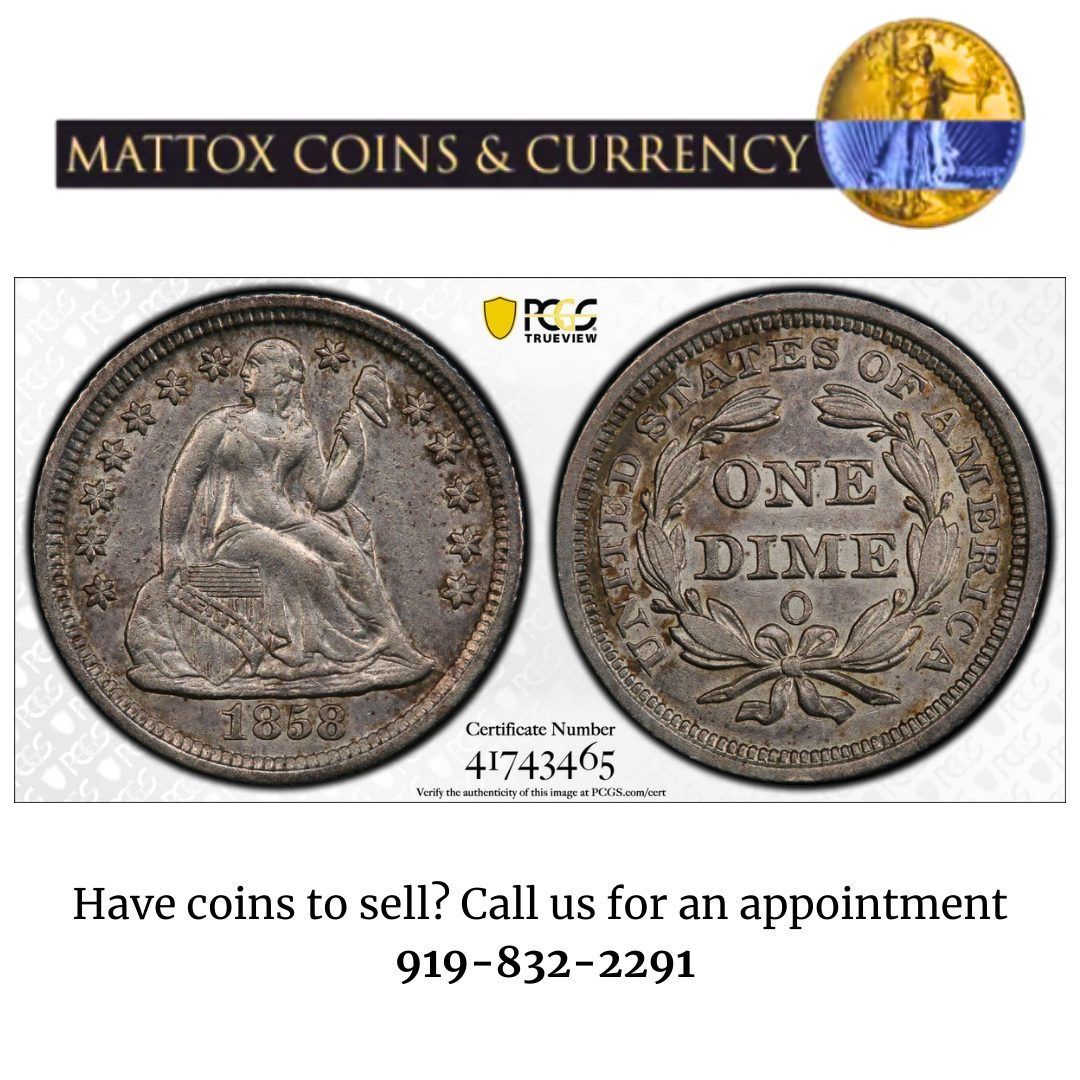
A. Bechtler gold dollars held a significant place in the history of the United States. From the late 1830s to the early 1850s, gold dollars, especially in the regions of North Carolina and Georgia, were utilized. These were generally not the official currency of the United States but rather privately minted gold coins by businesses or individuals. A. Bechtler gold dollars were produced by Christopher Bechtler, a German immigrant in North Carolina, and his sons. During a period when gold mining activities were increasing in the region, these coins were widely used, particularly among gold miners and local businesses. The markings on the coins, such as "27.G. 21.C.", indicated the weight and purity of the coin. These markings were important for determining the value and purity of the coin. These coins were predominantly used in local trade and daily transactions, especially in states like North Carolina and Georgia. However, after 1850, the U.S. government began taking measures to reduce the circulation of privately minted coins, and federal gold dollars became more prevalent. In general, A. Bechtler gold dollars occupy a significant place in the history of the United States concerning gold mining and coin minting.
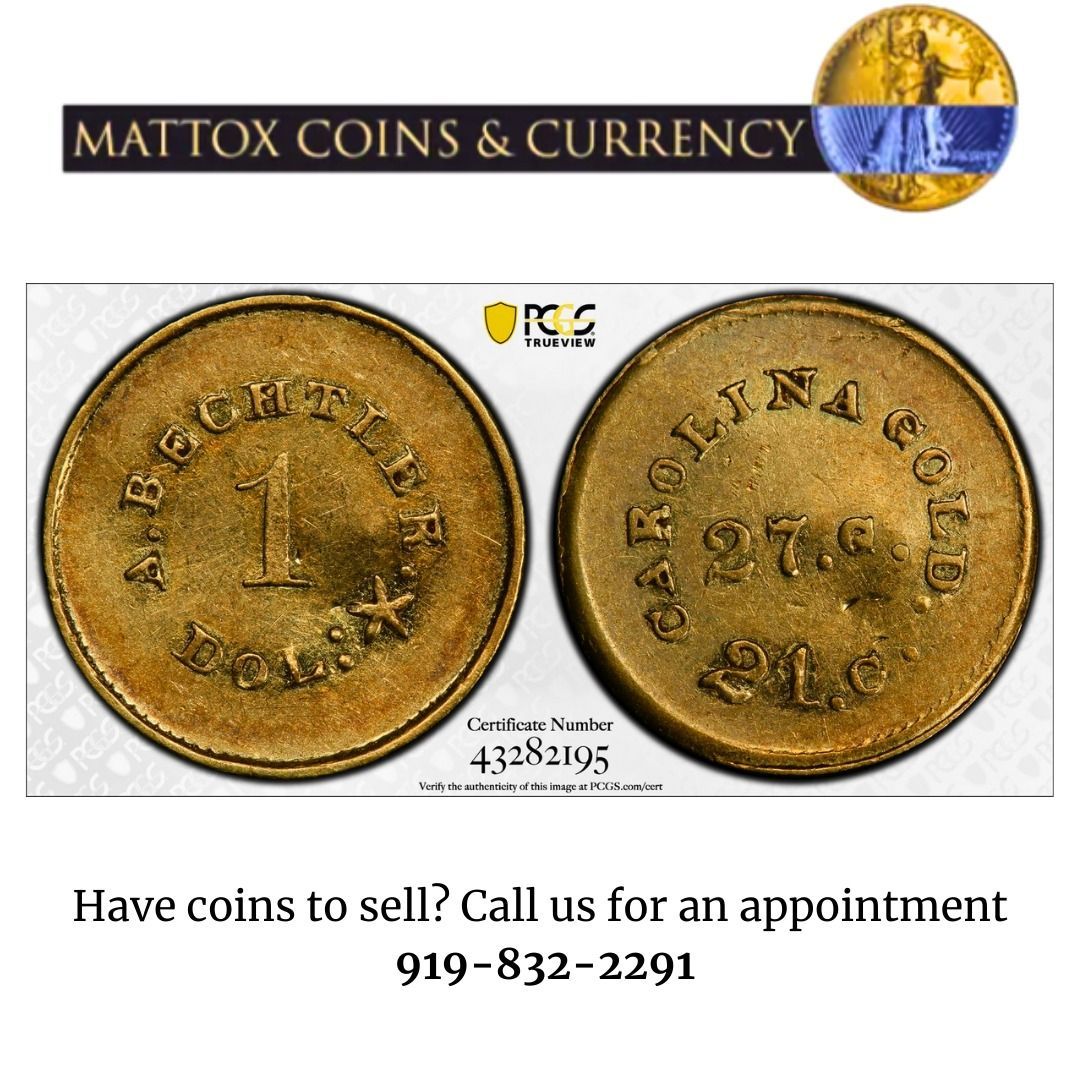
The German Thaler coin from 1866, stamped with the letter "A" associated with the Austrian Empire of that period. This historical Thaler is based on the significant currency unit "Thaler" (Taler) used in Germany and surrounding regions during that time. Minted in the year 1866, this coin may bear witness to the historical and political events of its era. The reference number KM-494 indicates its place in numismatic catalogs.
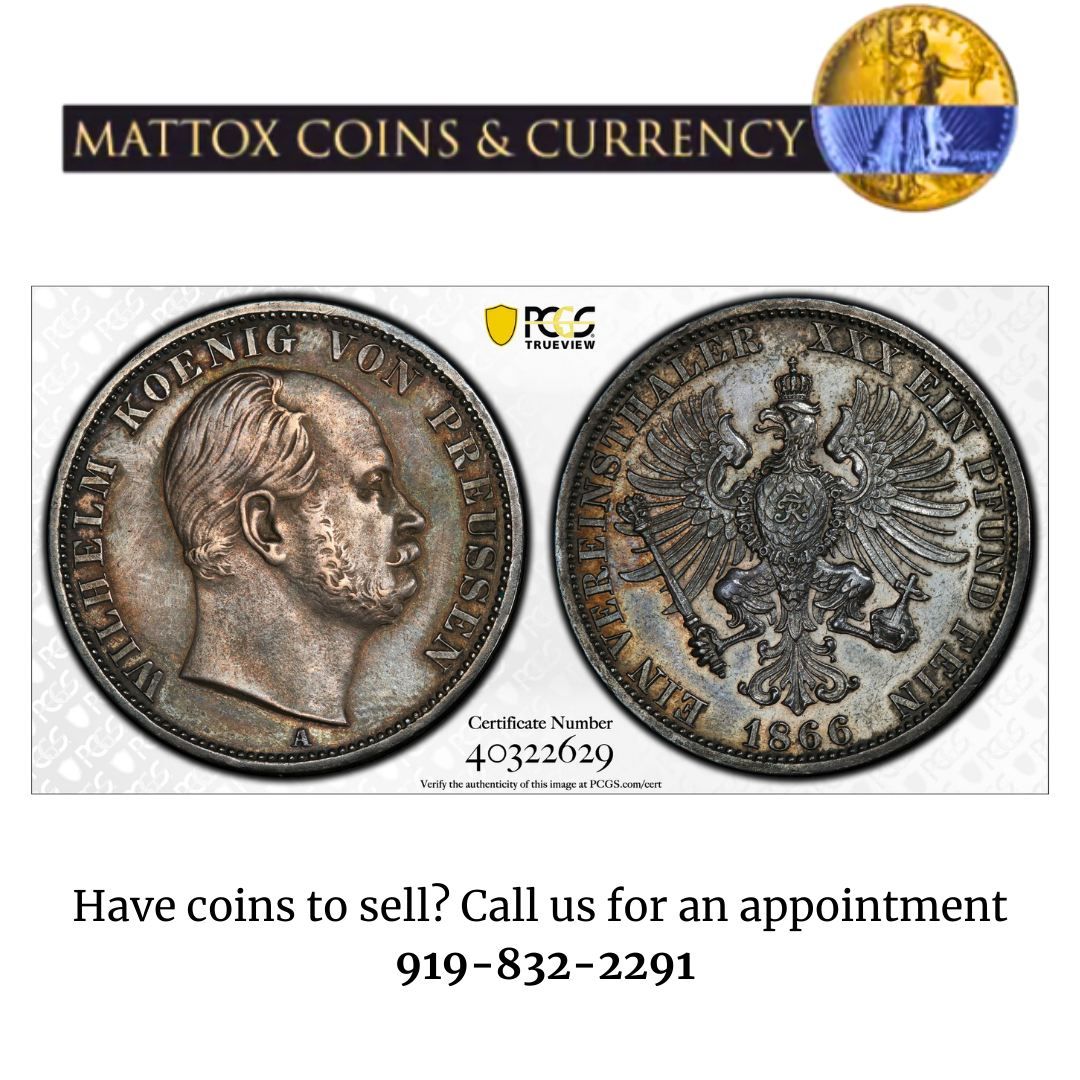
The 1995-W $1 Silver Eagle is one of the silver dollar coins of the United States. This special coin was minted at the West Point Mint in 1995 and is distinguished by the unique "W" mintmark. The high purity of silver (99.9%) and the Deep Cameo (DCAM) finish are among the features that make this coin attractive from a numismatic perspective. Due to its rarity and availability primarily in special sets, it is popular among collectors.
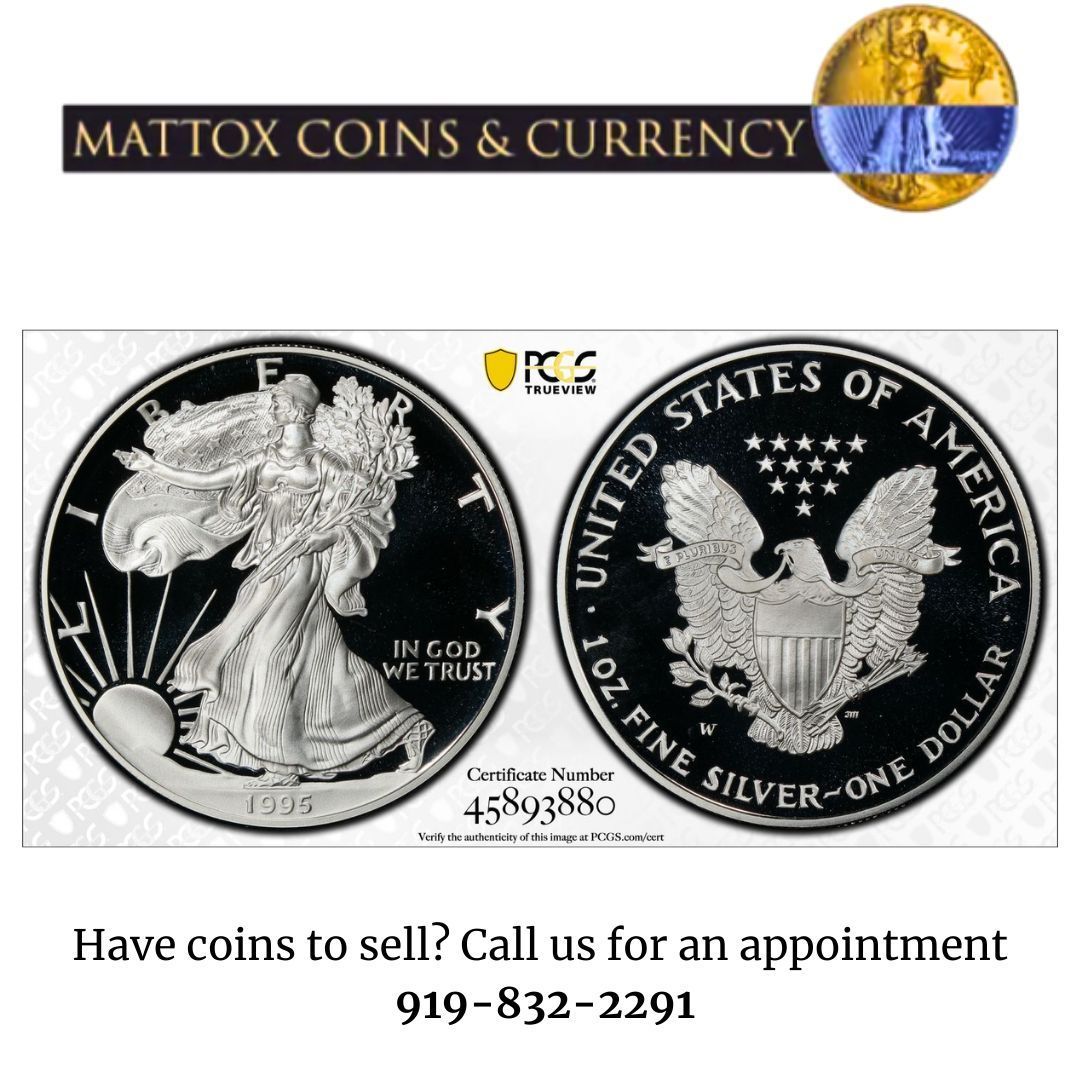
The 1884-CC Morgan Dollar is a silver dollar coin minted at the Carson City Mint in Nevada, United States. As part of the Morgan Dollar series, it features the portrait of a young Lady Liberty on the obverse and an eagle depiction on the reverse. This dollar is made from an alloy of 90% silver and 10% copper, with a weight of 26.73 grams and a diameter of 38.1 mm.
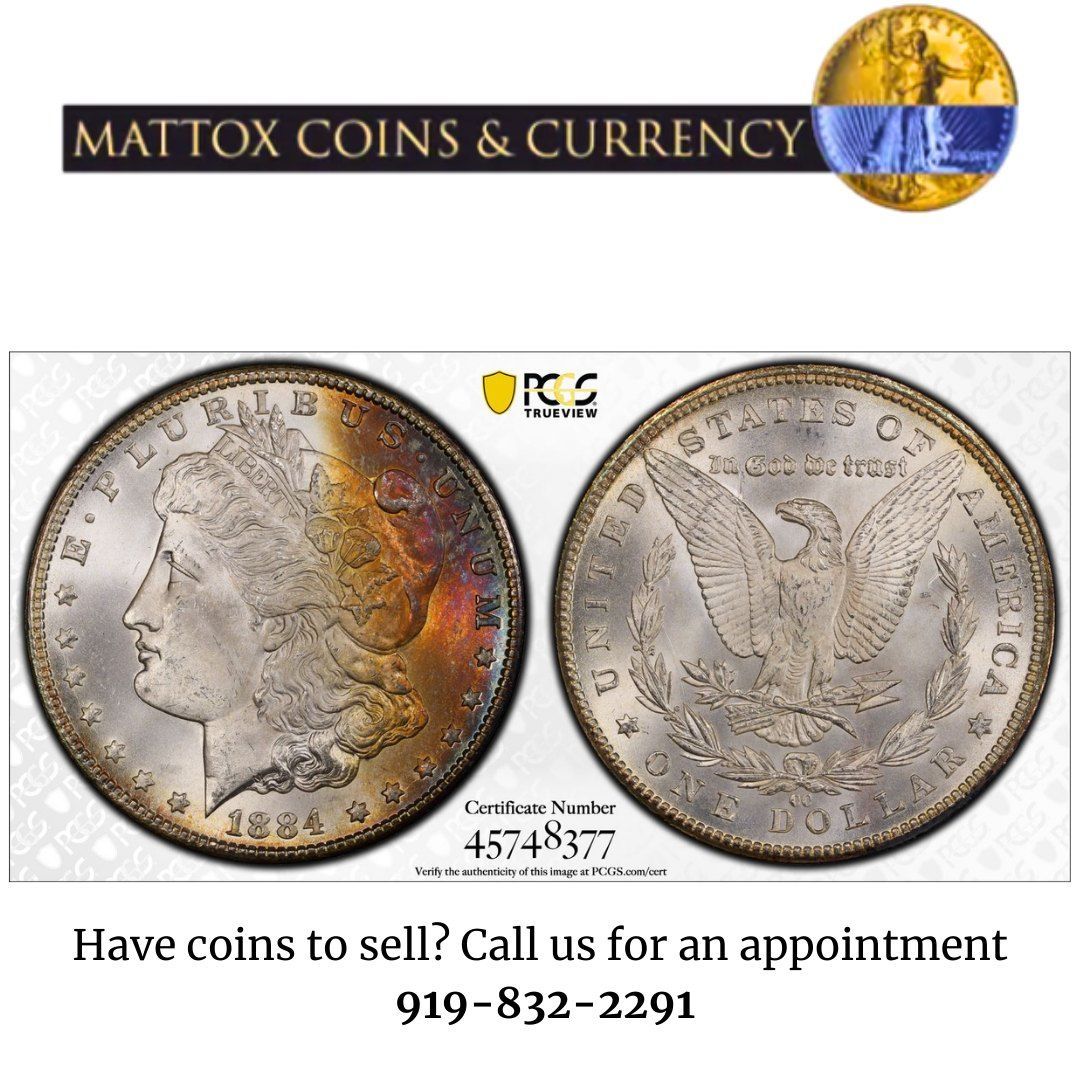
The $1 American Silver Dollar from 1893-S is known as an important coin in the history of the United States. This coin was minted in 1893 by the San Francisco Mint. The "S" mark indicates that the coin was minted at the San Francisco Mint. During this period, the silver dollars in circulation in the United States are generally referred to as Morgan Dollars. These coins were designed by the artist George T. Morgan. Morgan Dollars were minted between 1878 and 1904, and later in 1921. Due to economic difficulties and low coin production during this period, coins with mint marks from certain years can be more rare.
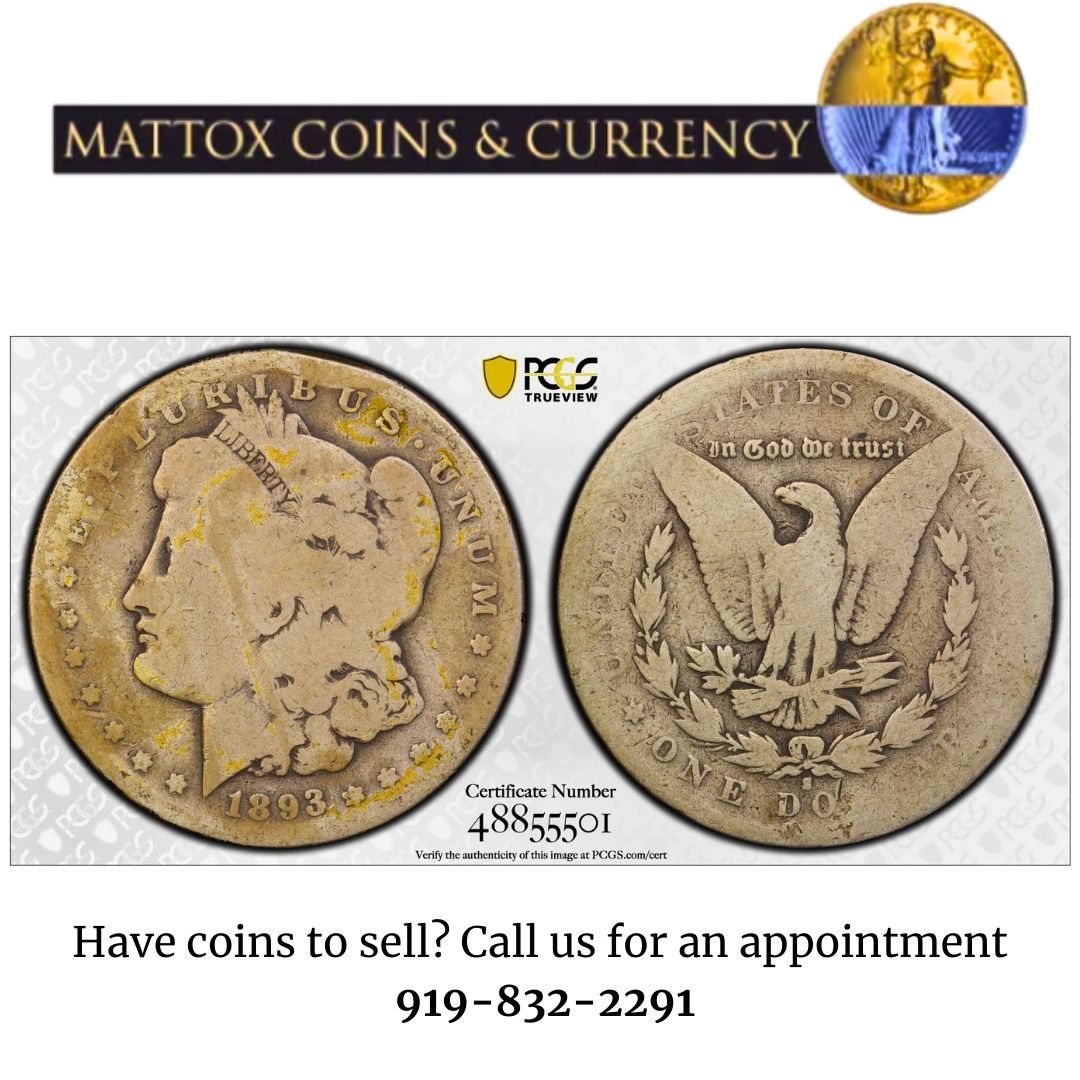
The 1883-CC Morgan Silver Dollar is a silver dollar coin minted by the United States Mint in Carson City, and it is a sought-after item among collectors. The term "PL BU" indicates that it has a shiny surface and is of high quality due to meticulous polishing. Such brilliance often stems from special production processes, rendering it valuable among collectors. The "PL BU" designation refers to a coin that has circulated but is in excellent condition. This particular dollar is distinguished by its design featuring the portrait of Lady Liberty and an eagle.
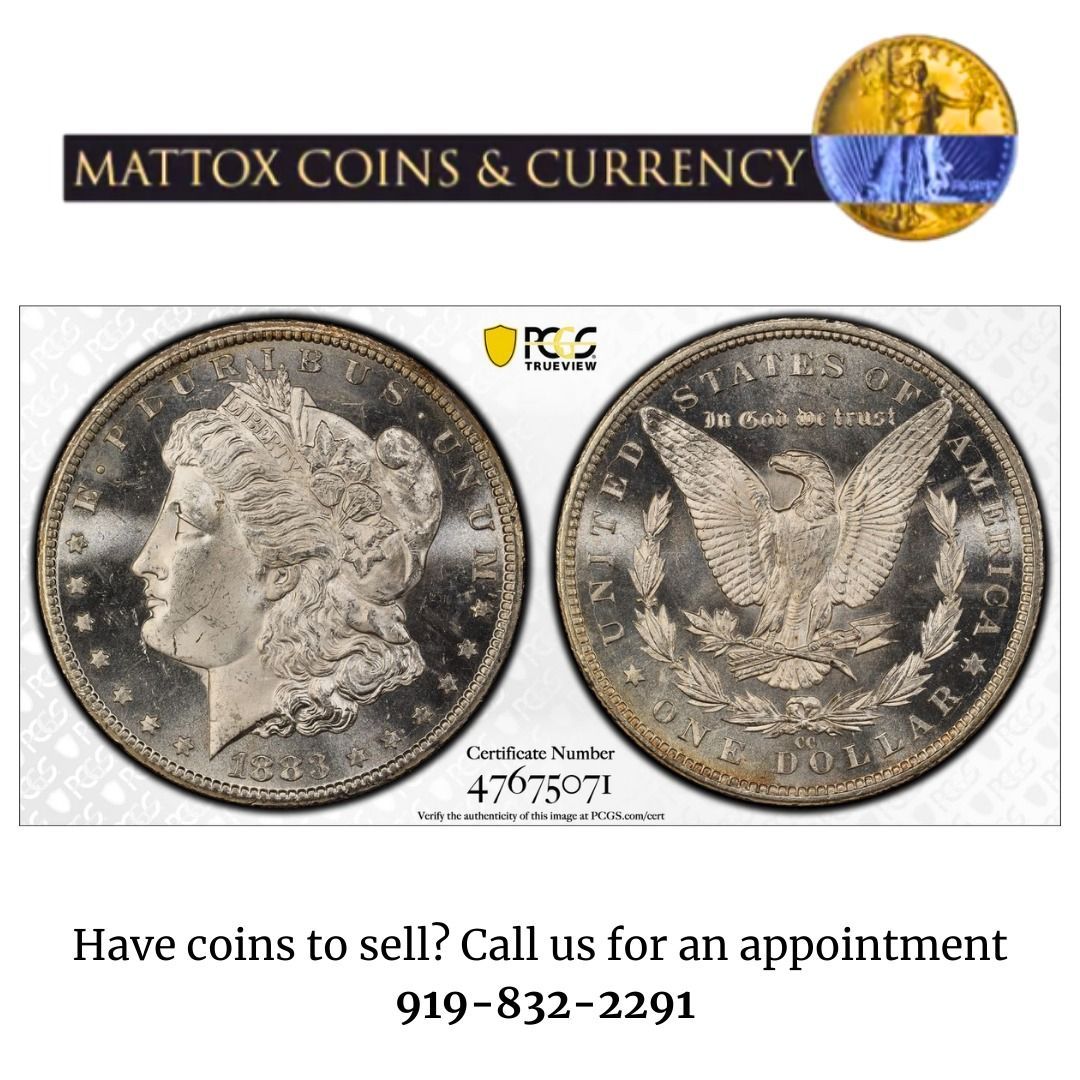
The 1884-CC Morgan Dollar is a silver dollar coin minted at the Carson City Mint in Nevada, United States. As part of the Morgan Dollar series, it features the portrait of a young Lady Liberty on the obverse and an eagle depiction on the reverse. This dollar is made from an alloy of 90% silver and 10% copper, with a weight of 26.73 grams and a diameter of 38.1 mm.

The 1995-W $1 Silver Eagle is one of the silver dollar coins of the United States. This special coin was minted at the West Point Mint in 1995 and is distinguished by the unique "W" mintmark. The high purity of silver (99.9%) and the Deep Cameo (DCAM) finish are among the features that make this coin attractive from a numismatic perspective. Due to its rarity and availability primarily in special sets, it is popular among collectors.

In 2021, the United States Mint released special Morgan and Peace Dollar Anniversary Coins to commemorate the 100th anniversary of the last year the Morgan Silver Dollar was minted and the first year the Peace Silver Dollar was minted. The transition from the Morgan Dollar to the design of the Peace Dollar in 1921 symbolized a significant period in American history. While the Morgan Dollar represented the country's westward expansion and industrial development in the late 19th century, the Peace Dollar reflected the role of the United States on the international stage and signified peace with Germany after World War I.
Designed by Chief Engraver George T. Morgan (1845-1925), the Morgan Dollar was originally minted from 1878 to 1904 and again in 1921. The special anniversary coins for 2021, inspired by the original, will be produced with uncirculated surfaces in five different Mint facilities.
In December 1921, Secretary of the Treasury Andrew Mellon approved the Peace Dollar to replace the Morgan Dollar. Sculpted by the renowned artist Anthony de Francisci (1887-1964), the Peace Dollar was minted until 1935. The 2021 Peace Dollar, without mint marks and with a non-circulating finish, will be produced by the Mint to commemorate this historic transition.

The 1855 1-cent coin is a significant piece in the history of the United States, representing an important era. Minted specifically in the mid-19th century, notably in the year 1855, this coin holds historical value. The term "Upright 55" signifies the upright position of the numerals "55" on the coin, serving as a distinctive feature that sets it apart from other varieties. Additionally, the designation "BN" indicates that the coin is typically covered with a brown-toned patina, representing a natural color change that occurs over time. This 1855 1-cent coin stands as a noteworthy numismatic example, reflecting the economic and historical context of its era in the United States. Have coins to sell? Call us for an appointment at 919-832-2291 or visit our website www.mattoxcoinsandcurrency.com
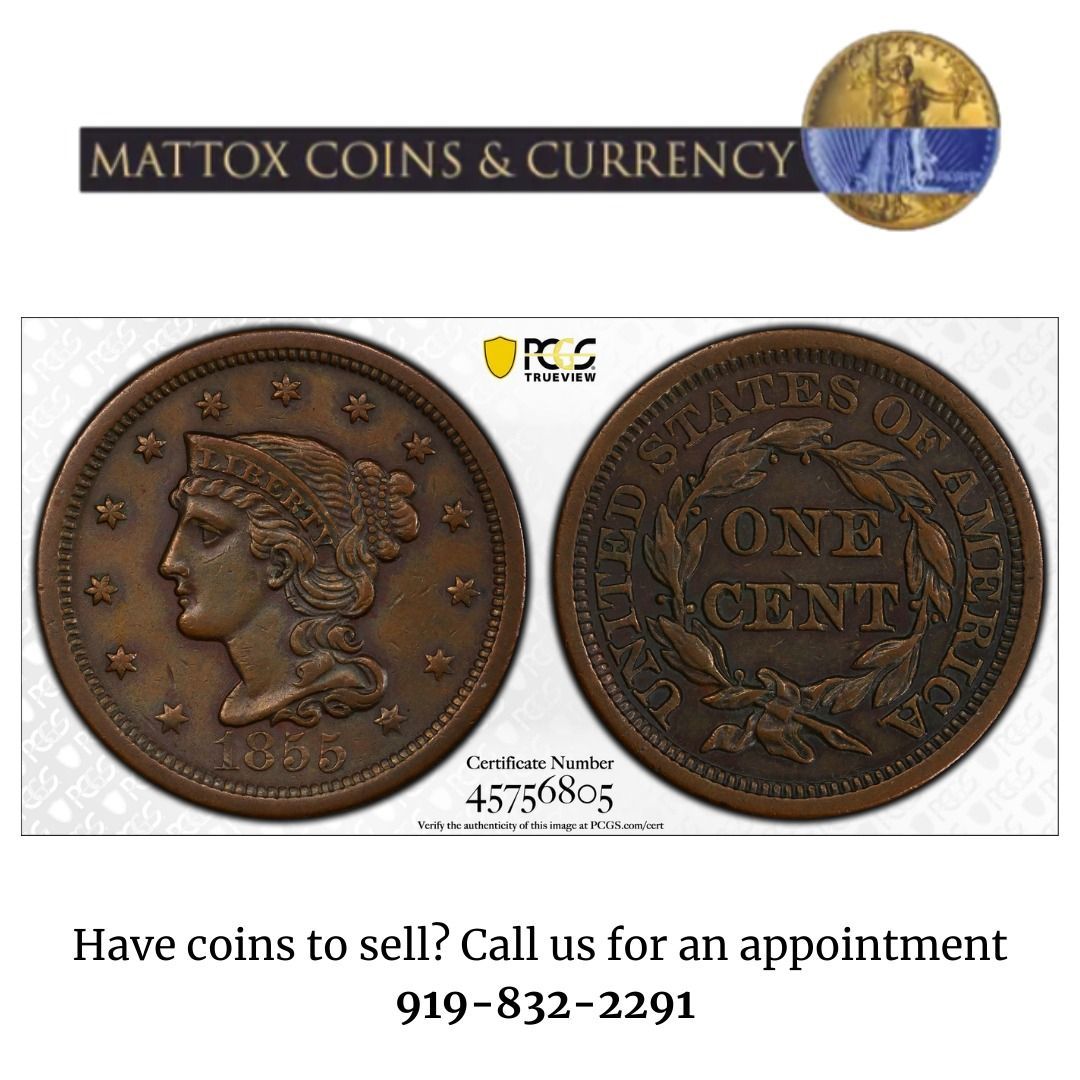
The 1794 1 Cent represents a significant copper coin from the early days of America. The "Head of 1794" design on the obverse features a powerful right-facing portrait of Lady Liberty. Minted in 1794, this coin served as a symbol of the young America's pursuit of independence and freedom. Reflecting the challenges and hopes of that era, this coin is not just currency but also a cultural relic bearing the imprints of the earliest steps in American history.
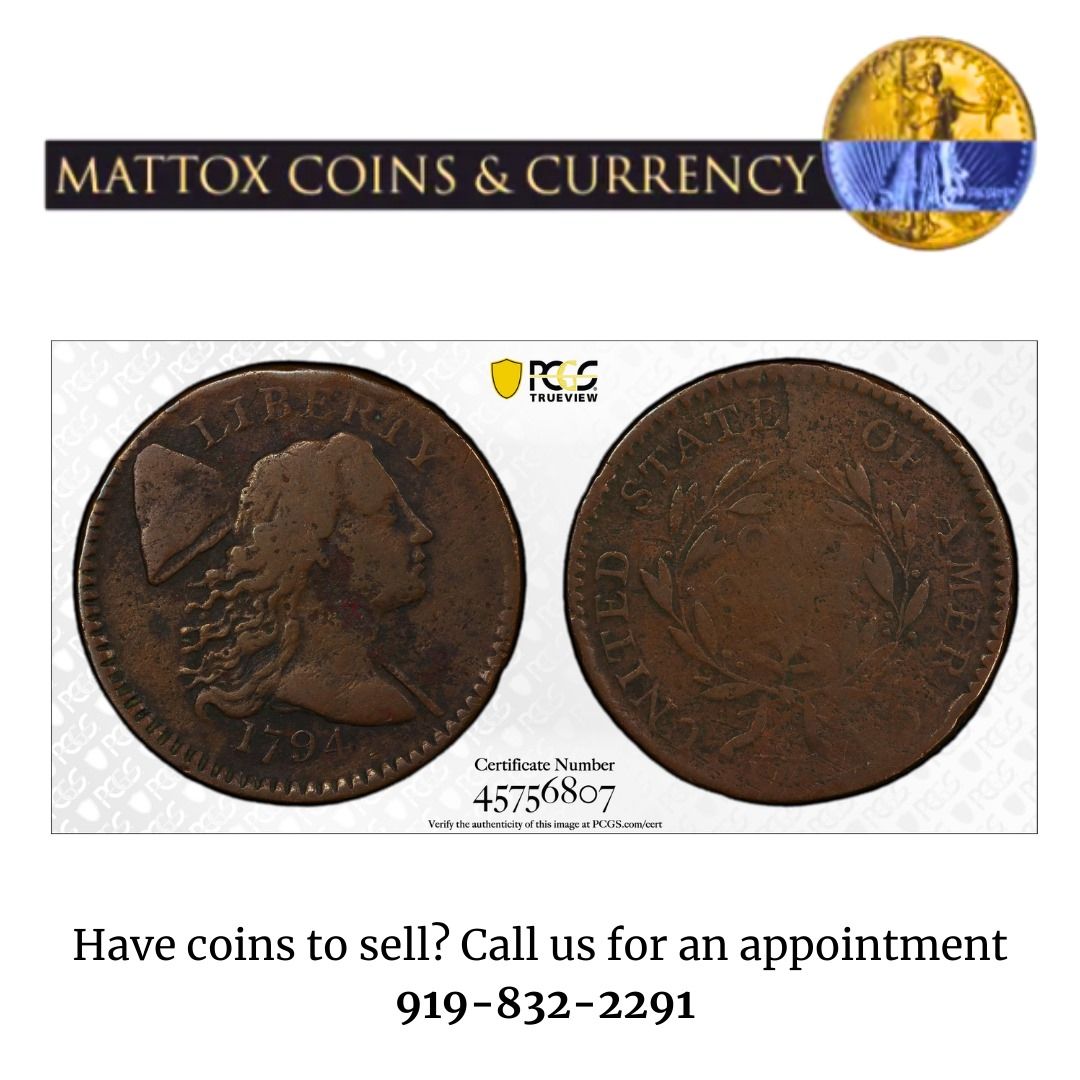
The coin gets its name from the fact that the buffalo on the reverse (tails side) appears to have only three legs instead of the usual four. The story behind this variety is that a Mint employee at the Denver Mint in 1937 was attempting to repair a damaged die by grinding away excess metal. In the process, one of the buffalo's legs was inadvertently removed, resulting in the 3-Legged variety. The error was not noticed immediately, and a small number of these coins were minted before the mistake was corrected.
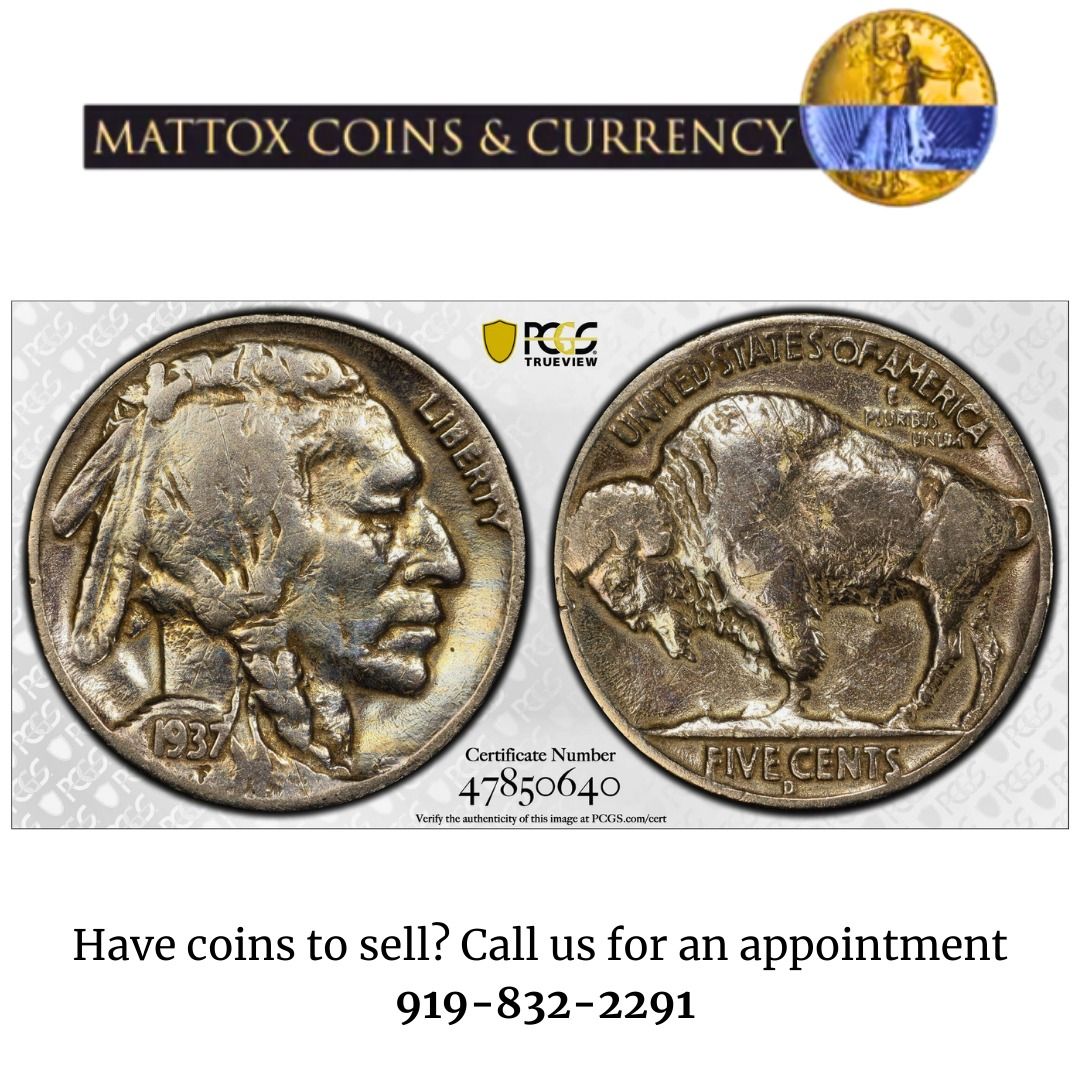
The 1921 standing liberty is one of the key dates to the series. Quarter dollars dated 1921 were produced at both the Philadelphia and Denver Mints, so they do not bear any mintmark. The 1921 quarter dollars feature the standard design of the era, designed by the renowned American artist George T. Morgan.
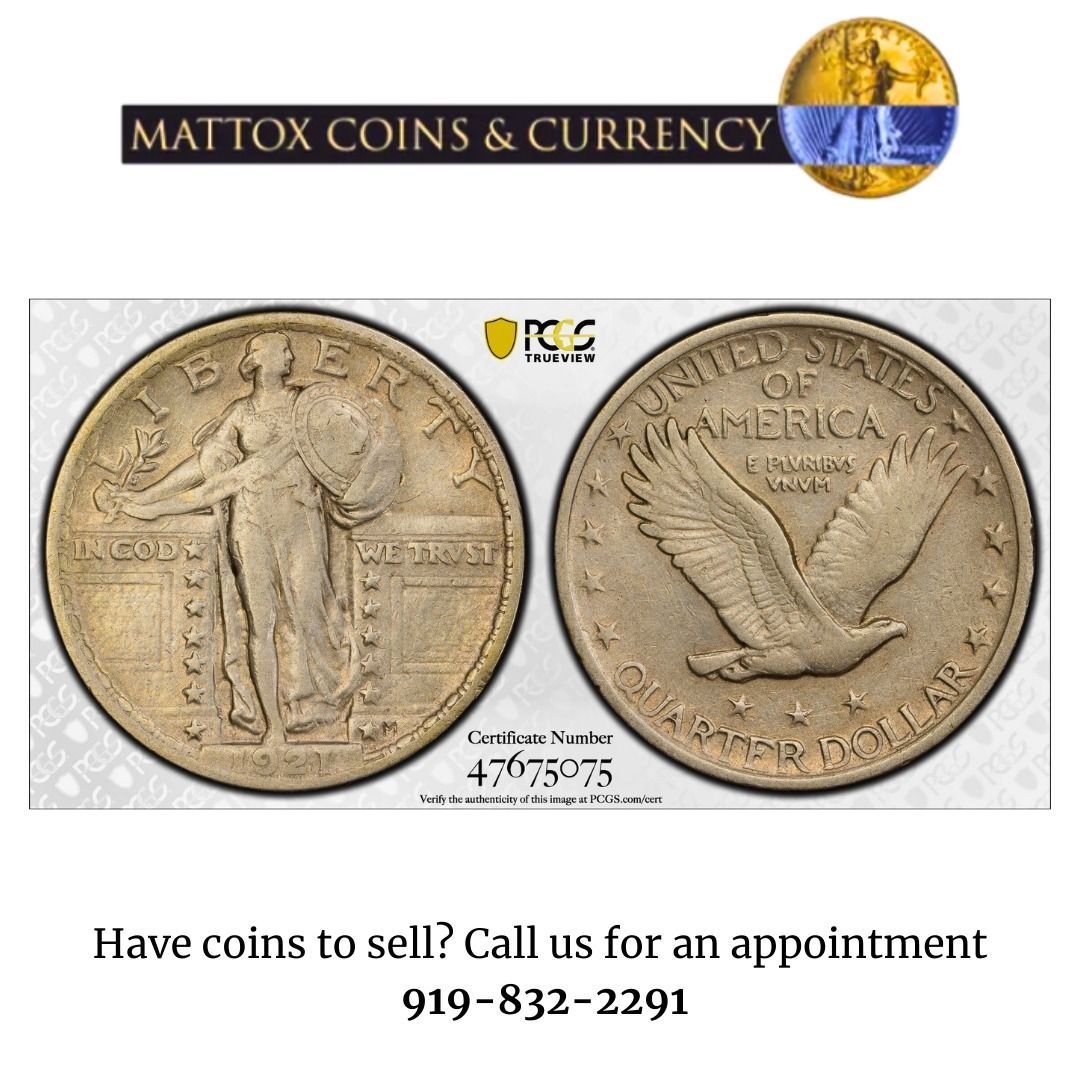
This coin is a type of silver coin that was minted in the United States and is quite popular. It was minted at the San Francisco Mint in 1916. Mercury dimes are also called "Merkur dimes" because they have a forward-leaning head and a winged cap, but in reality, this figure is not the Roman god Mercury but is considered a depiction of Liberty, representing freedom.
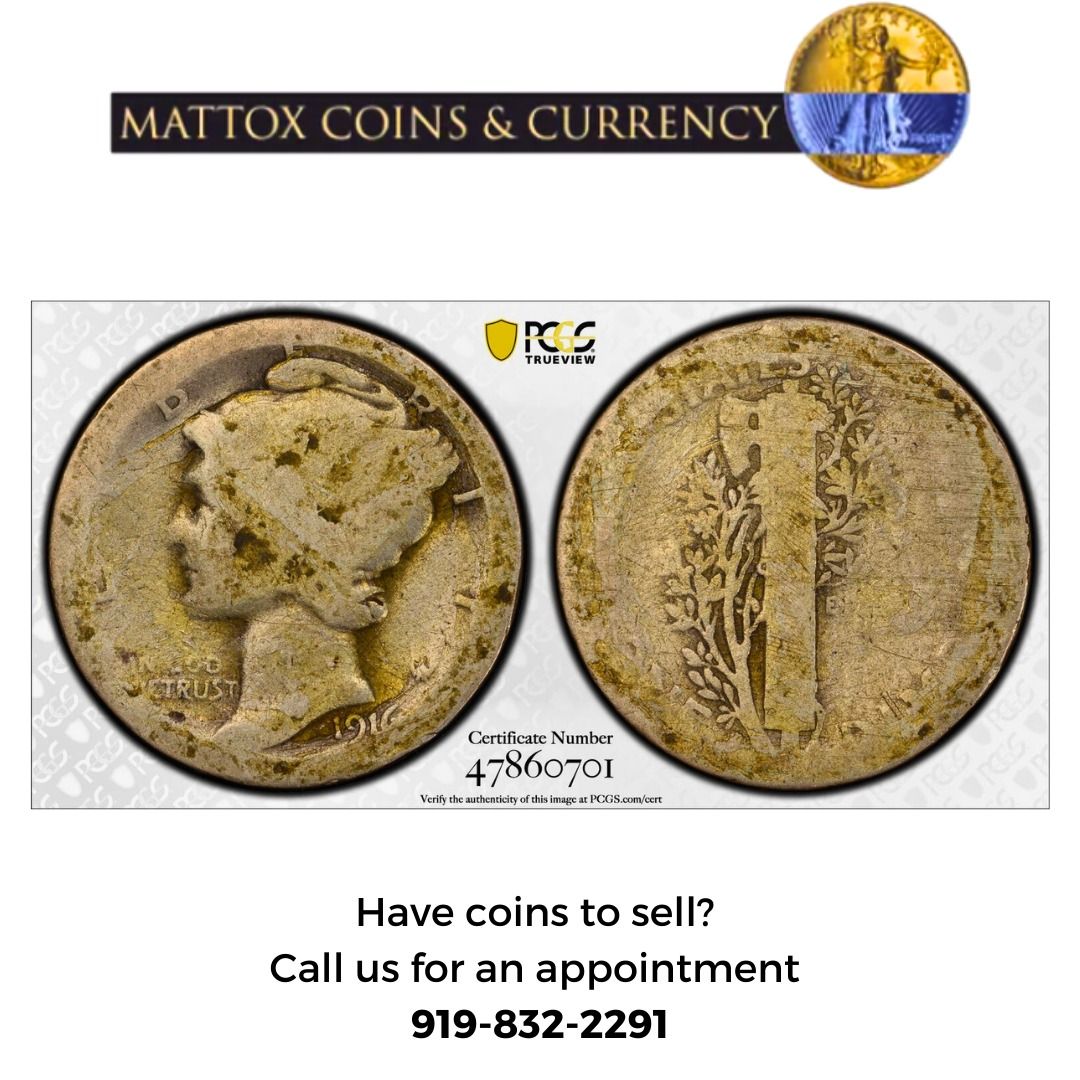
This coin is a silver dollar coin minted at the San Francisco Mint in the United States. This coin is also known as the Morgan Silver Dollar. During this period, the San Francisco Mint was involved in the production of silver dollars and only minted these coins in specific years. The rarity of the 1895-S Morgan Dollar is due to its limited mintage, as only a restricted number were produced.

USA 1909-S VDB
The 1909-S VDB 1C is a significant part of United States coinage. This rare coin is known for its unique design and historical importance. On the obverse, it bears the signature of its designer, Victor David Brenner, while the reverse features a portrait of Abraham Lincoln.
Its release in 1909 is one of the distinguishing features of this coin. It was minted to commemorate the 100th anniversary of Lincoln's birth. More importantly, the 1909-S VDB 1C marked the restart of copper coin production in the United States.
This rare coin garners substantial attention among collectors and often reaches high values. Its rarity and historical context make it a significant story in American coinage. Today, the 1909-S VDB 1C holds considerable market value and is considered a sought-after treasure by collectors.
The 1909-S VDB 1C represents an intriguing and important period in United States coinage history. This rare coin holds great significance both historically and numismatically, making it an unforgettable piece for collectors.

Washington Token
This interesting 1783 1c Washington token predates the first American coinage and is an interesting part of American currency history.
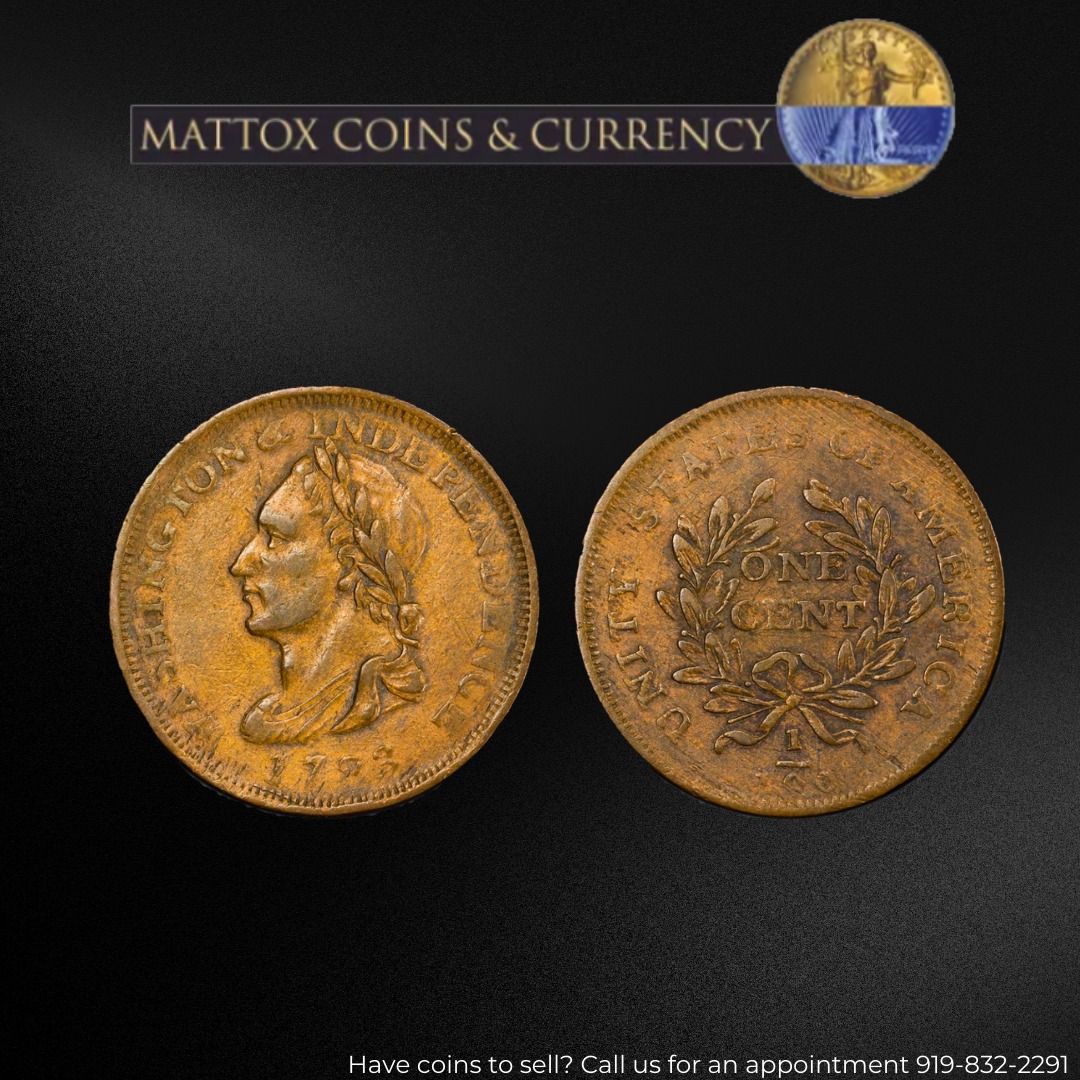
Did you Know...?
- First Year features Laurel Wreath on reverse.
- Next Year changed to Oak Wreath with a small shield.
- 1859-1860 show a pointed bust
- 1860-1864 have a rounded bust.
- Prior to 1866, these were called nickels, nicks or white cents.



